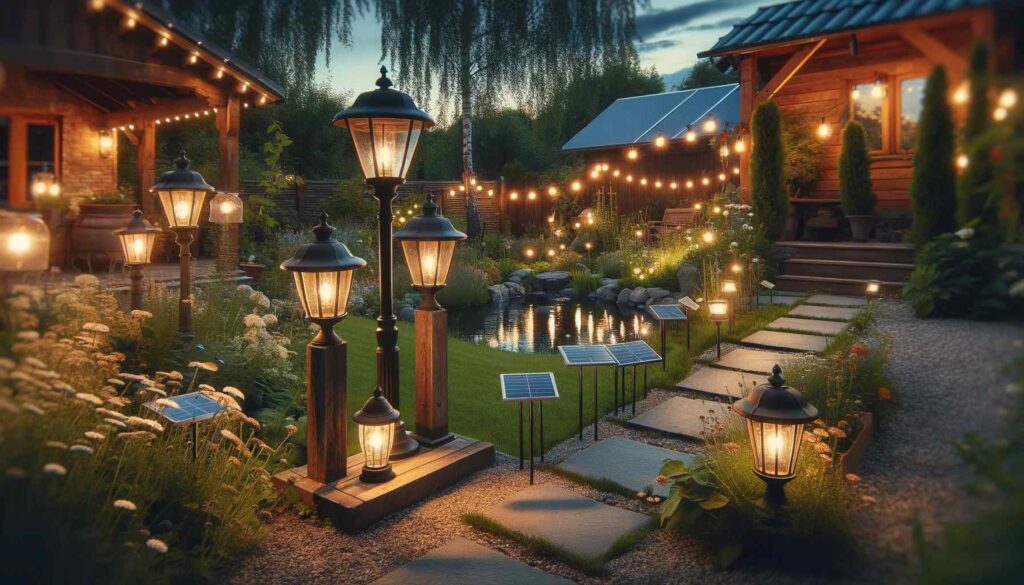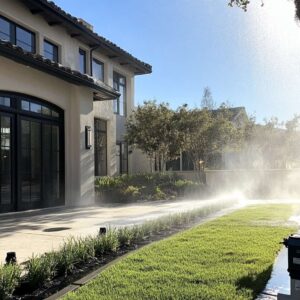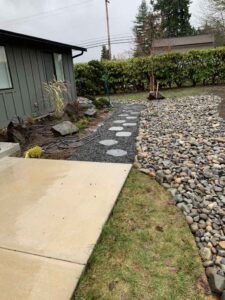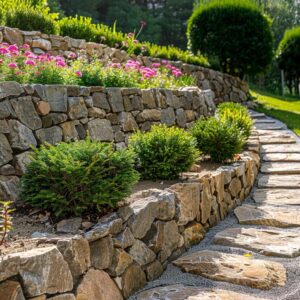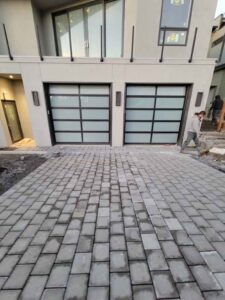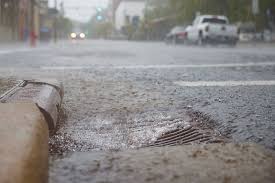Exterior lighting is more than just a functional element for home safety; it is a Landscape Design that enhances the aesthetic appeal and usability of your outdoor spaces after dark. Ivan’s Landscape & Construction, serving Granite Falls and surrounding areas in Washington State, offers expert guidance on installing exterior lighting that can elevate the beauty and security of your property.
Whether you’re looking to highlight garden features, light up a pathway, or increase the safety around your home, following the right installation procedures is key to achieving both visual appeal and functionality.
Key Takeaways:
- Preparation Is Key: Gather all necessary tools and thoroughly review manufacturer instructions.
- Design and Planning: Use markers to plot out where lights will be installed for optimal layout and effect.
- Proper Installation: Ensure correct digging, wiring, and mounting of fixtures for safety and durability.
- Functionality Check: Test the lighting setup and adjust as necessary to achieve the desired outcome.
Prepare and Assemble
Before you begin the installation process, it’s crucial to prepare by gathering all the necessary tools and equipment. This includes selecting the appropriate light fixtures for outdoor use that can withstand the weather conditions in Granite Falls. Careful reading of the manufacturer’s instructions is essential to avoid any installation errors and to ensure that each fixture functions as intended.
- Tools Needed: Drill, screwdrivers, wire strippers, hammer, shovel.
- Materials Needed: Light fixtures, waterproof wire nuts, electrical tape, conduits for underground installations.
- Read Thoroughly: Pay special attention to safety warnings and installation tips provided in the fixture manuals.
Mark the Locations
Use temporary markers to outline where you intend to install each light fixture. This step helps visualize the arrangement and ensures that the lighting is evenly distributed and aesthetically pleasing. Proper planning here can save time and effort by avoiding repositioning lights after installation.
- Placement Planning: Decide the exact points for fixture placement, considering both function and design.
- Visualization: Use flags, stakes, or spray paint to mark each location clearly.
- Adjustments: Take a step back to look at the layout from different angles, adjusting markers as necessary before any permanent installation begins
Dig and Bury
Installing exterior lighting that requires underground wiring is a meticulous process that enhances the durability and safety of your lighting system. For path lights and other similar fixtures in Granite Falls, begin by planning the route for your wiring. This involves digging trenches to a depth of approximately 6 inches, although this depth may vary based on local regulations or specific fixture requirements.
Detailed Steps:
- Mapping the Path: Before digging, use a line or garden hose to outline the path for your wiring. This helps in visualizing the trajectory and ensuring it’s free of obstructions such as large roots or underground utilities.
- Digging Trenches: Using a trench digger or a sturdy shovel, dig along your marked path. Keep the trenches as straight as possible to facilitate easier conduit installation.
- Installing Conduits: Place heavy-duty conduit into the trenches. This tubing acts as a protective sheath that shields electrical wires from moisture, pests, and mechanical damages. Ensure that all sections of the conduit are securely connected and lay flat at the bottom of the trench.
- Covering Up: Once the conduit is laid and wiring is pulled through, backfill the trench with soil. Compact the soil as you fill to prevent excessive settling or water pooling.
Wire the Fixtures
Wiring outdoor fixtures requires careful attention to ensure that all connections are safe and waterproof. In Granite Falls, where weather can be unpredictable, ensuring that each connection is secure and resistant to water ingress is crucial to prevent electrical failures and safety hazards.
Key Considerations:
- Stripping and Connecting Wires: Use a wire stripper to remove a small section of insulation from the ends of each wire. Connect the wires according to the color coding or labels as specified in the manufacturer’s instructions. This usually involves matching colors of wires together—black to black (hot), white to white (neutral), and green or bare to green or bare (ground).
- Securing Connections: Apply waterproof wire nuts or caps to each connection to prevent moisture from causing short circuits. For additional protection, wrap each connection with electrical tape.
- Testing Connections: Before burying or concealing any wiring, connect the power briefly to test if the lights work as expected. This step helps identify any issues early in the installation process.
Mount the Fixtures
Mounting your light fixtures properly is essential for both aesthetic and functional performance. The fixtures must be securely attached to their designated locations, whether mounted on walls, trees, or placed into the ground.
Installation Tips:
- Surface Preparation: For wall-mounted lights, ensure the mounting surface is clean and stable. Use appropriate fasteners for the material, whether it’s brick, siding, or wood.
- Level and Secure: Use a level to ensure fixtures are mounted evenly. This is particularly important for wall-mounted and post-mounted lights to ensure they look cohesive and well-aligned.
- Ground Fixtures: When installing lights directly into the ground, such as stake lights along a path, make sure they are driven deep enough to stand firmly. In softer soil, you may need to use additional stakes or anchors to secure them.
- Final Adjustments: Once mounted, adjust the position of the lights if necessary. For spotlights or directional lights, aim them towards the feature or area you want to highlight.
By following these enhanced steps for digging and burying, wiring, and mounting, you ensure that your exterior lighting installation in Granite Falls not only looks professional but also operates safely and efficiently over the long term.
Test and Adjust
After mounting, test each light fixture to make sure all are working correctly. Adjust the angles and positions as needed to optimize the lighting effect, ensuring that your property in Granite Falls is beautifully and effectively lit.
- Testing Procedure: Turn on the power and inspect each light for proper function.
- Adjustment Tips: Reposition lights to eliminate any dark spots and ensure full coverage of intended areas.
- Final Checks: Walk through the area during nighttime to see the actual effects and make any last-minute tweaks.
About Ivan's Landscape & Construction
When it comes to Granite Falls, Ivan’s Landscape & Construction is dedicated to creating and maintaining beautiful, functional outdoor spaces. Our team of experienced professionals is committed to delivering high-quality results with every project we undertake, from exterior lighting installation to comprehensive landscape design.
At Ivan’s, we believe that a well-lit landscape not only increases the safety and security of your property but also enhances its night-time appeal, adding value and enjoyment. We are proud to offer customized lighting solutions that reflect the unique style and needs of each customer. Contact Ivan’s Landscape & Construction today to start your outdoor lighting project and turn your property into a showcase of light and beauty.
Contact Us Today for a Free quote for your next project!
Number: (425) 239-1339
FAQ: Installing Exterior Lighting with Ivan's Landscape & Construction
Before you begin the installation of your exterior lighting, it is essential to gather all necessary tools and materials, including drills, wire strippers, hammers, shovels, light fixtures suitable for outdoor use, waterproof wire nuts, and conduits for underground installations. Make sure to read the manufacturer’s instructions thoroughly to understand the installation process and safety guidelines.
Start by using markers, like flags, stakes, or spray paint, to plot out where each light fixture will be installed. This step helps ensure that the lighting is evenly distributed and aligns with both aesthetic and functional goals. Consider the main features you want to highlight, such as pathways, garden elements, or architectural details, and adjust the layout from different angles before beginning any permanent installation.
The installation involves digging trenches to a recommended depth of about 6 inches, although this can vary based on local regulations. Use a line or garden hose to mark the path for the wiring, ensuring it is free of obstructions. Place a heavy-duty conduit in the trenches to protect the wires from moisture and damage. After laying the wires, backfill the trench and compact the soil to prevent settling.
After laying the wiring, use wire strippers to prepare the ends of each wire and connect them according to the manufacturer’s instructions. Secure all connections with waterproof wire nuts and electrical tape to prevent moisture ingress. For mounting, ensure that each fixture is securely attached to its designated location, using appropriate fasteners and making sure they are leveled and stable.
Once the fixtures are mounted, turn on the power to test each light for functionality. Adjust the angles and positions to optimize coverage and highlight desired areas effectively. It’s a good idea to walk through your property at night to see the actual effects and make any necessary adjustments to ensure your exterior space is beautifully illuminated.



